Speedrun of the Retro Gaming Museum in Vienna
I hope you love retro computers, joysticks with microswitches and the glow of arcade screens just as much as I do. I spent a delightful evening underground in a WWII bunker filled with beeping, blinking nostalgia. This quick tour of the Retro Gaming Museum in Vienna is light on text but heavy on photos.
November 2025

The
Retro Gaming Museum is located in a bunker right next to
the Haus des Meeres.
Astute readers of this site are probably aware that I have a soft spot for retro computing and gaming. A friend of mine sent me a link to the Retro Directory. This online tool shows you retro computing museums, events, and stores around the world, which is how I discovered this particular museum in Vienna.
So off I went to visit the Retro Gaming Museum Vienna at Fritz-Grünbaum-Platz 1, 1060 Wien. It was opened in July 2023 at the old location of the Torture Museum, tucked under Esterházypark in a former air-raid shelter right next to the Haus des Meeres. The setting alone is memorable: you descend into a concrete bunker and are welcomed by rows of consoles, home computers and arcade machines that chart the history of video games from Pong onward. It feels like stepping through a time tunnel someone quietly wired up with power strips and CRTs.
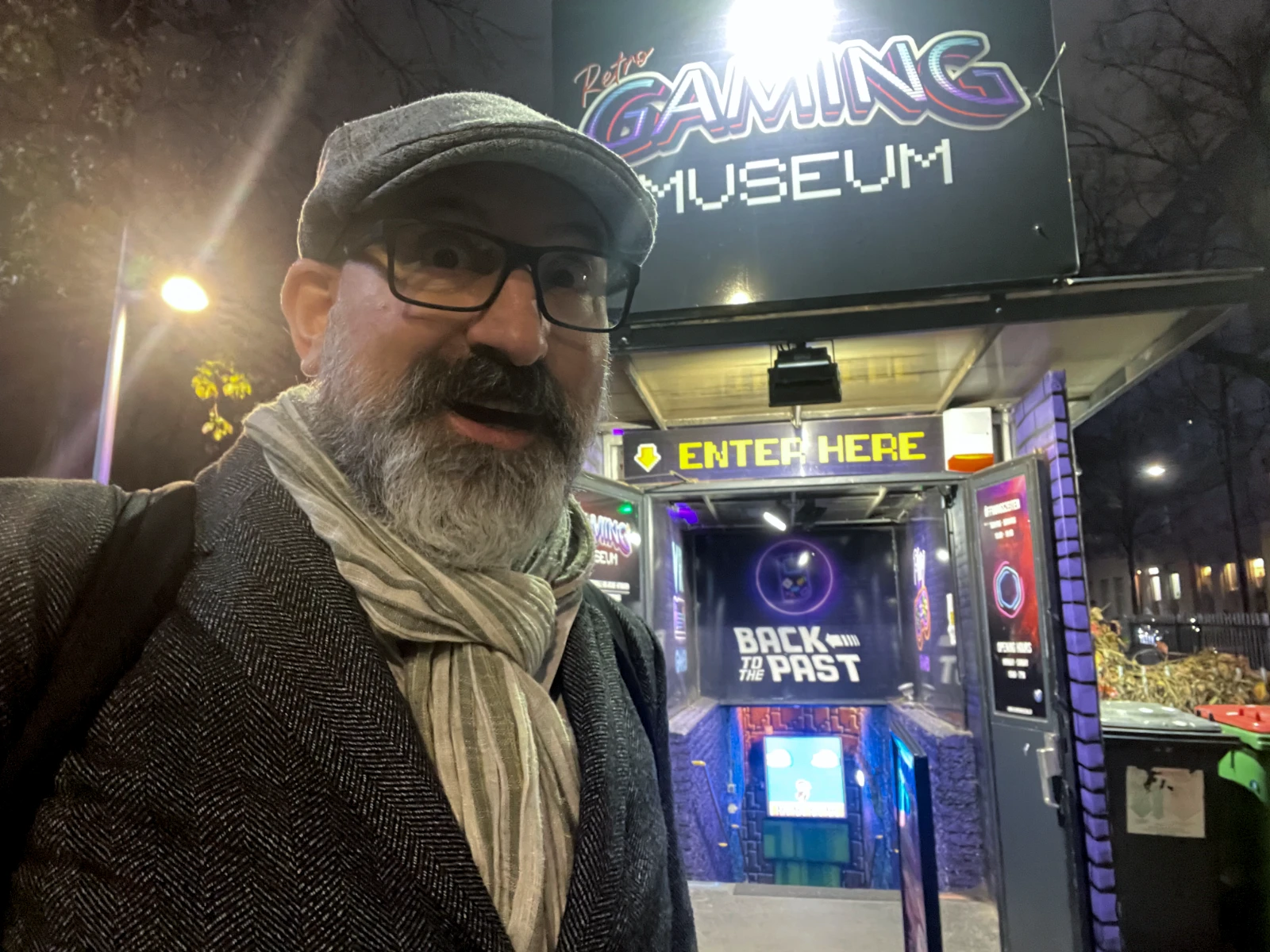
The
bunker entrance at Fritz-Grünbaum-Platz sets the tone for
the visit.
Getting to the museum is pleasantly straightforward. It is just a short walk from the U3 Neubaugasse station, and several bus lines stop at Haus des Meeres, so it fits nicely into a day of wandering through Vienna's 6th district. Once you spot the bunker entrance at Fritz-Grünbaum-Platz, you know you are heading somewhere a bit different from the usual white-walled museum space.
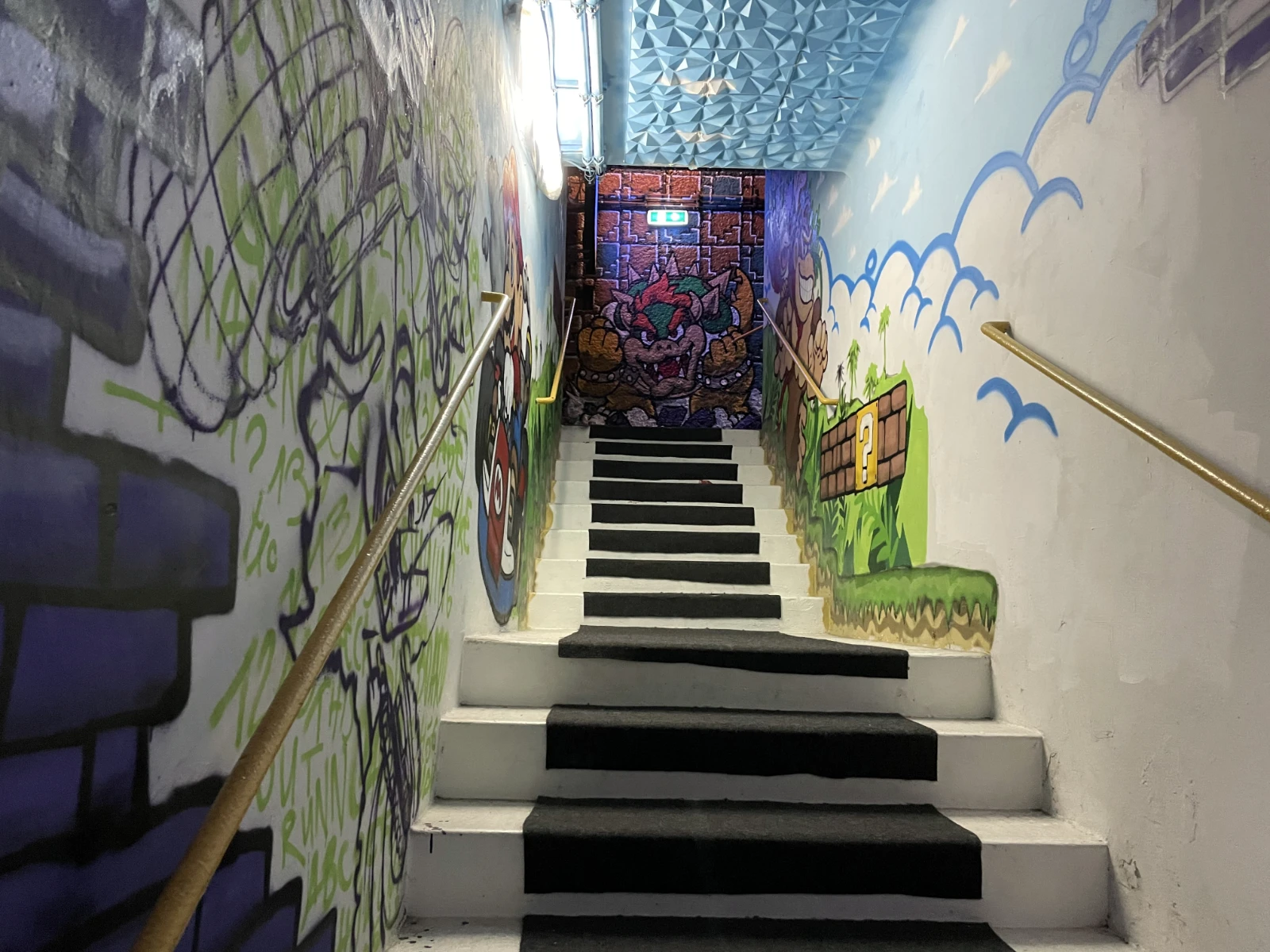
Descending into
the bunker feels like entering a different
era.
Opening Hours and Tickets
The Retro Gaming Museum is open daily, Monday through Sunday, from 10:00 to 19:00, which makes it easy to fit into almost any schedule. At the time of my visit, the standard adult ticket was around 12.90 Euros. That gives you plenty of time to wander through the exhibitions, read the info panels and (most importantly) play on the machines.
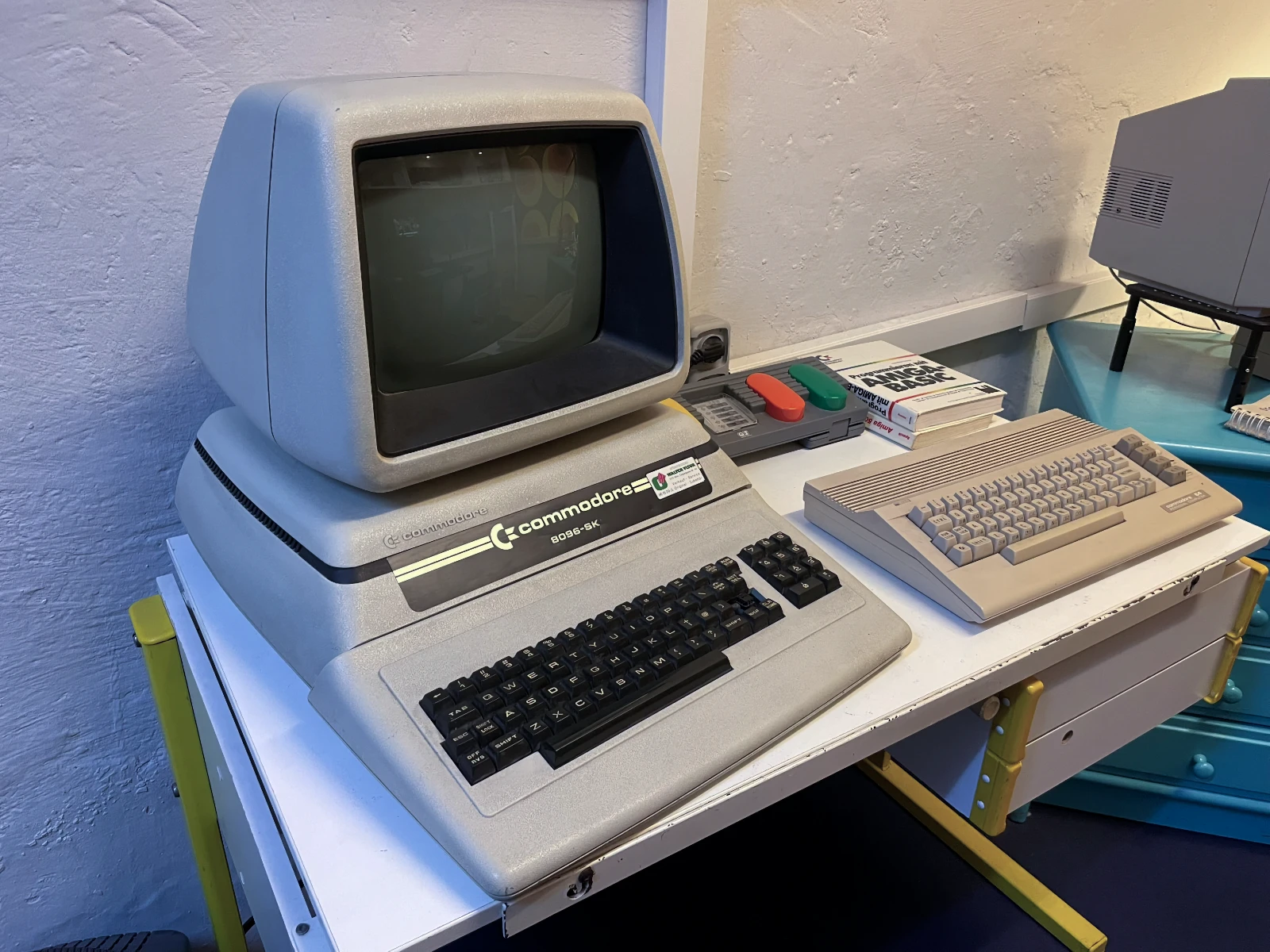
Classic Commodore computers
including the PET and C64.
I went for something a little more "on brand" for gamers: the Speedrun ticket. This special ticket is available every day from 17:30 and costs 5.90 Euros. It gives you about ninety minutes inside the museum, which is just enough time to sprint through several decades of gaming history without getting overwhelmed. It felt like an IRL speedrun: limited time, lots of levels to clear and way too many tempting side quests in the form of old consoles begging to be played.

The legendary C64 and C128 side by
side.
Inside the Bunker
Stepping through the entrance, you immediately notice how well the location and theme fit together. The thick walls and low ceilings of the bunker create a cozy, slightly mysterious atmosphere that suits the hum of electronics and pixelated graphics. It is not a sterile "look but don't touch" museum. Instead, it is an interactive playground where the past is not just displayed behind glass but powered on and waiting for you.
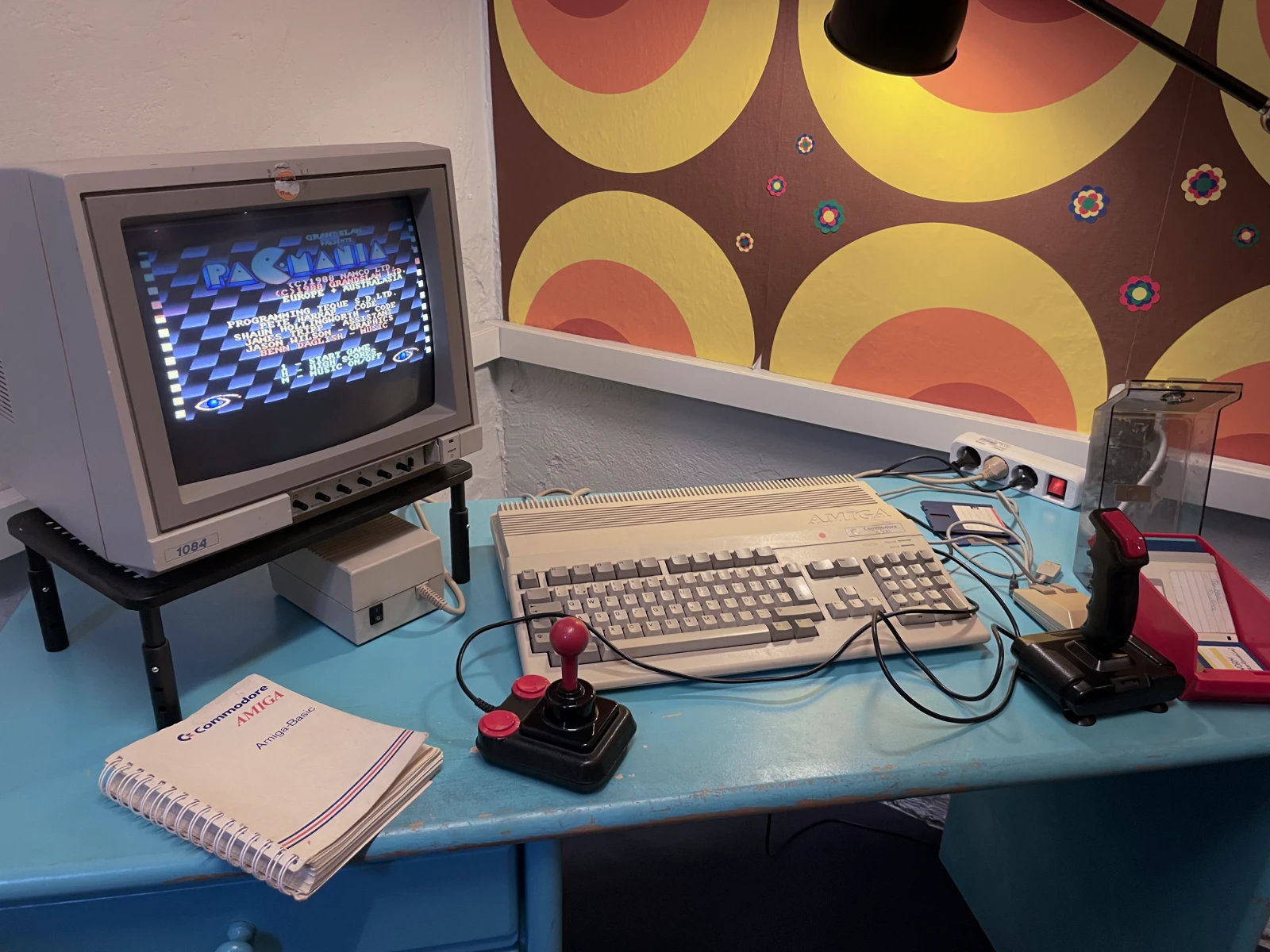
The Amiga section was my shrine to this 16-bit
wonder.

The Videopac, a lesser-known but fascinating console.
As you move through the space, the layout takes you roughly chronologically through gaming history. You pass rows of home computers, consoles and handhelds, each with little bits of context about the era they came from. Somewhere between the home computer corner and the console shelves, the museum flips from history lesson to playground: there are many stations where you can sit down and actually play the games. Classic arcade-inspired titles, beloved console hits and the kind of simple but brutally addictive games that defined entire childhoods are all there.
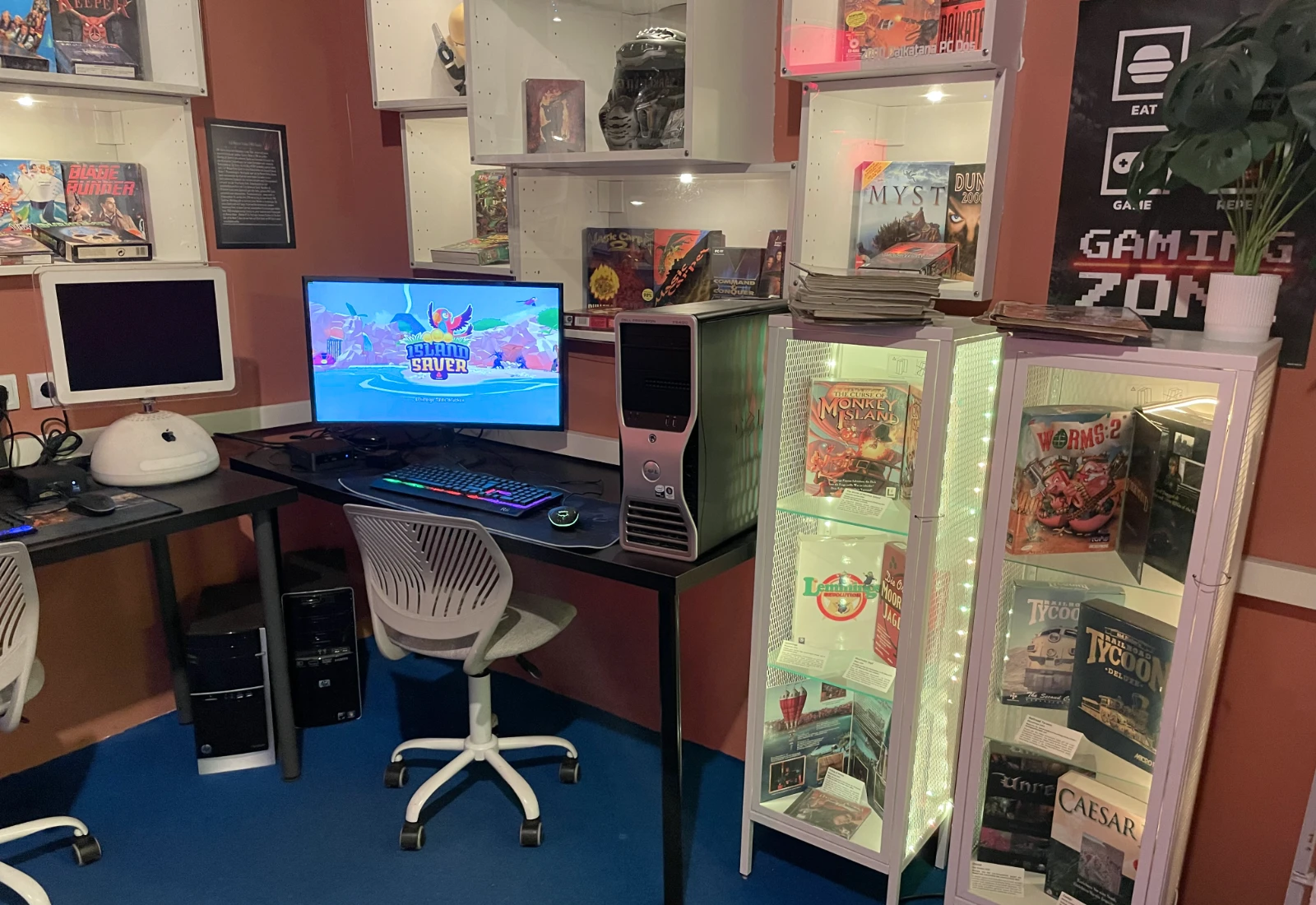
An iMac G4, a PC gaming setup and a display cabinet
with
wonderful games from the early 90s.
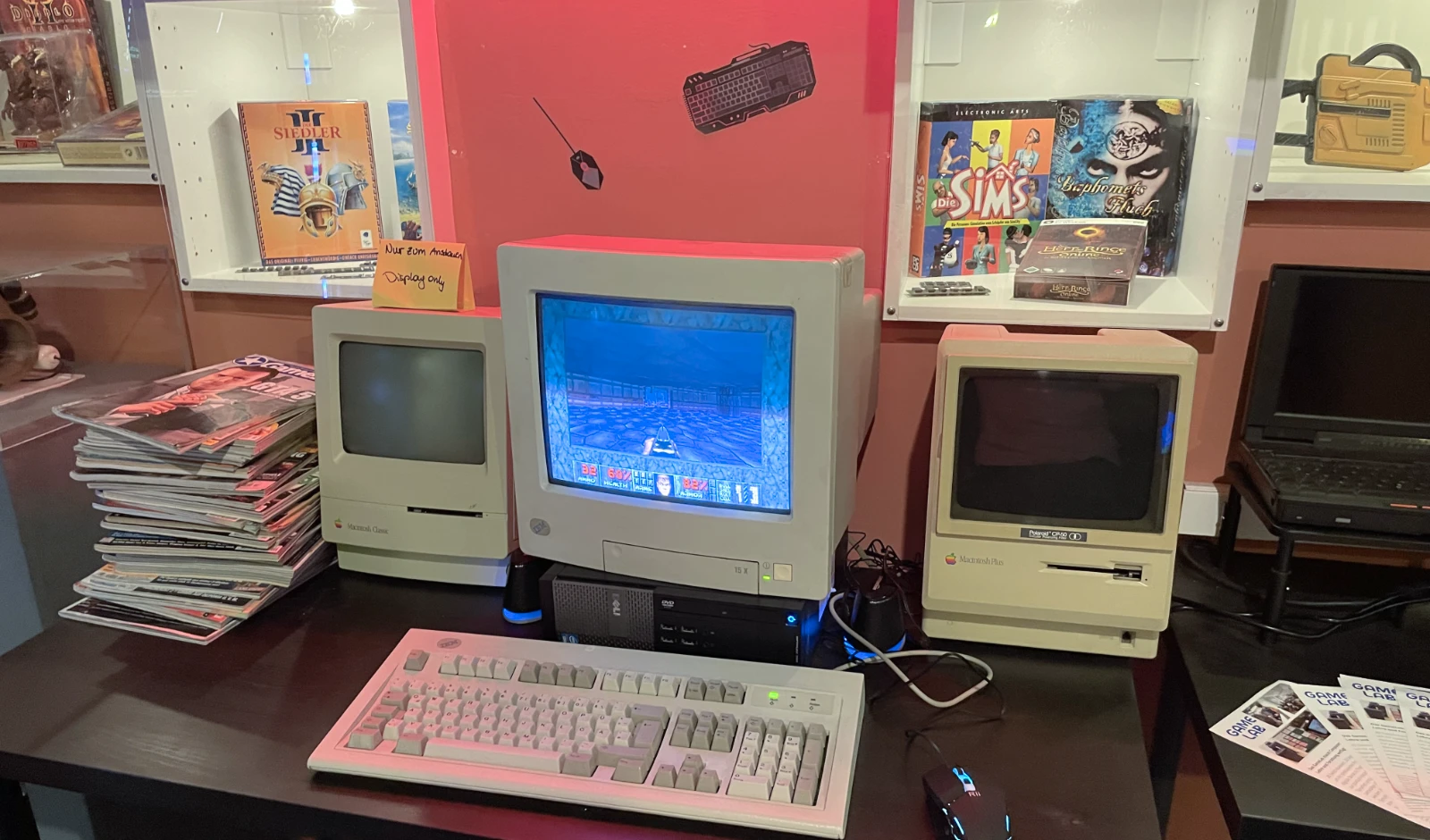
A classic Macintosh representing Apple's early
computing
history.
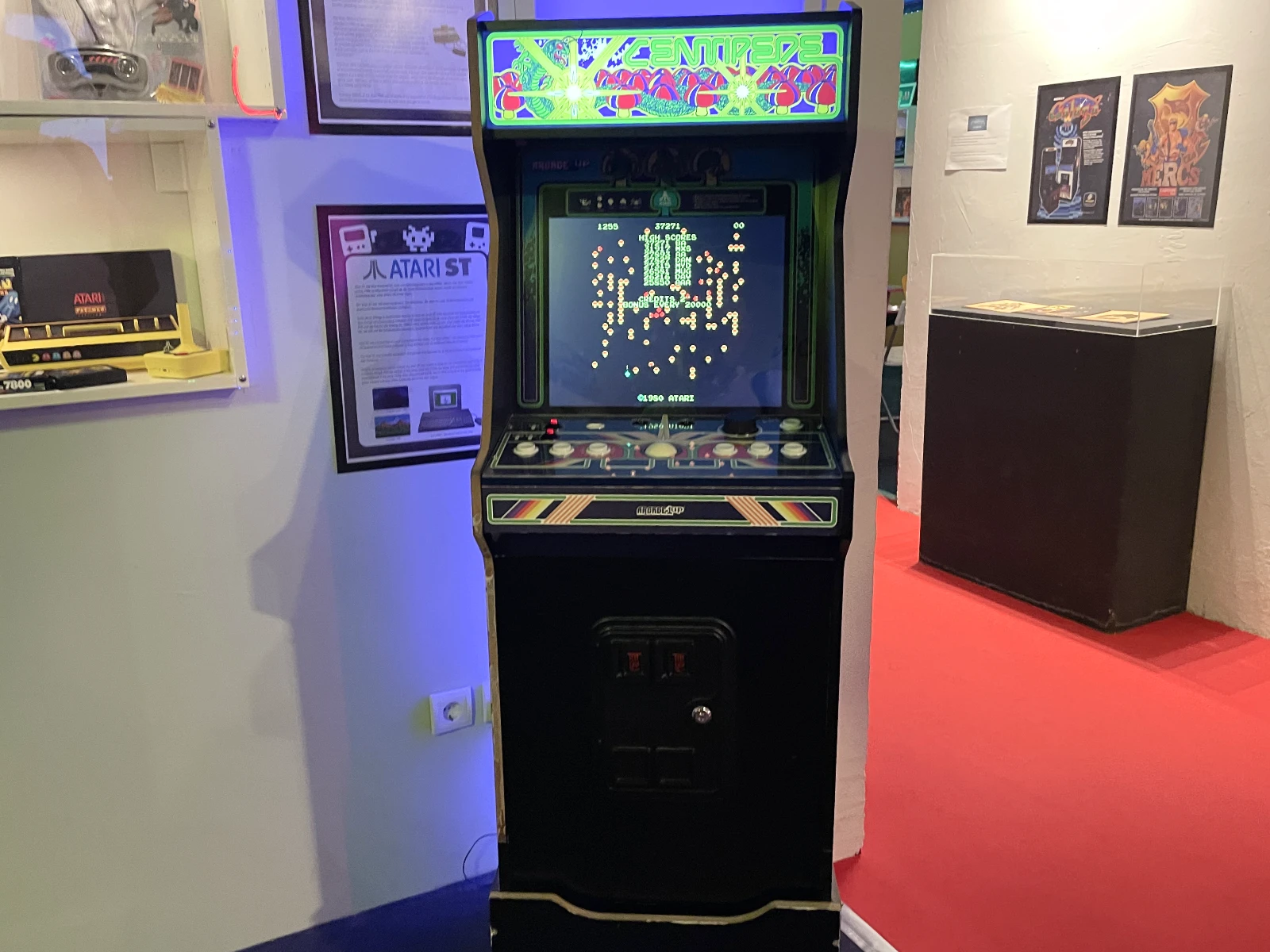
Classic Centipede arcade cabinet ready to play.
My 90-Minute Speedrun
With the speedrun ticket, I had one and a half hours to explore. That constraint shaped the whole visit in a fun way. Instead of slowly reading every caption, I moved like a player with a timer ticking down in the corner of the screen, choosing carefully where to spend my precious minutes. I focused on the machines and games that meant something to me personally and the ones that looked too quirky to ignore.
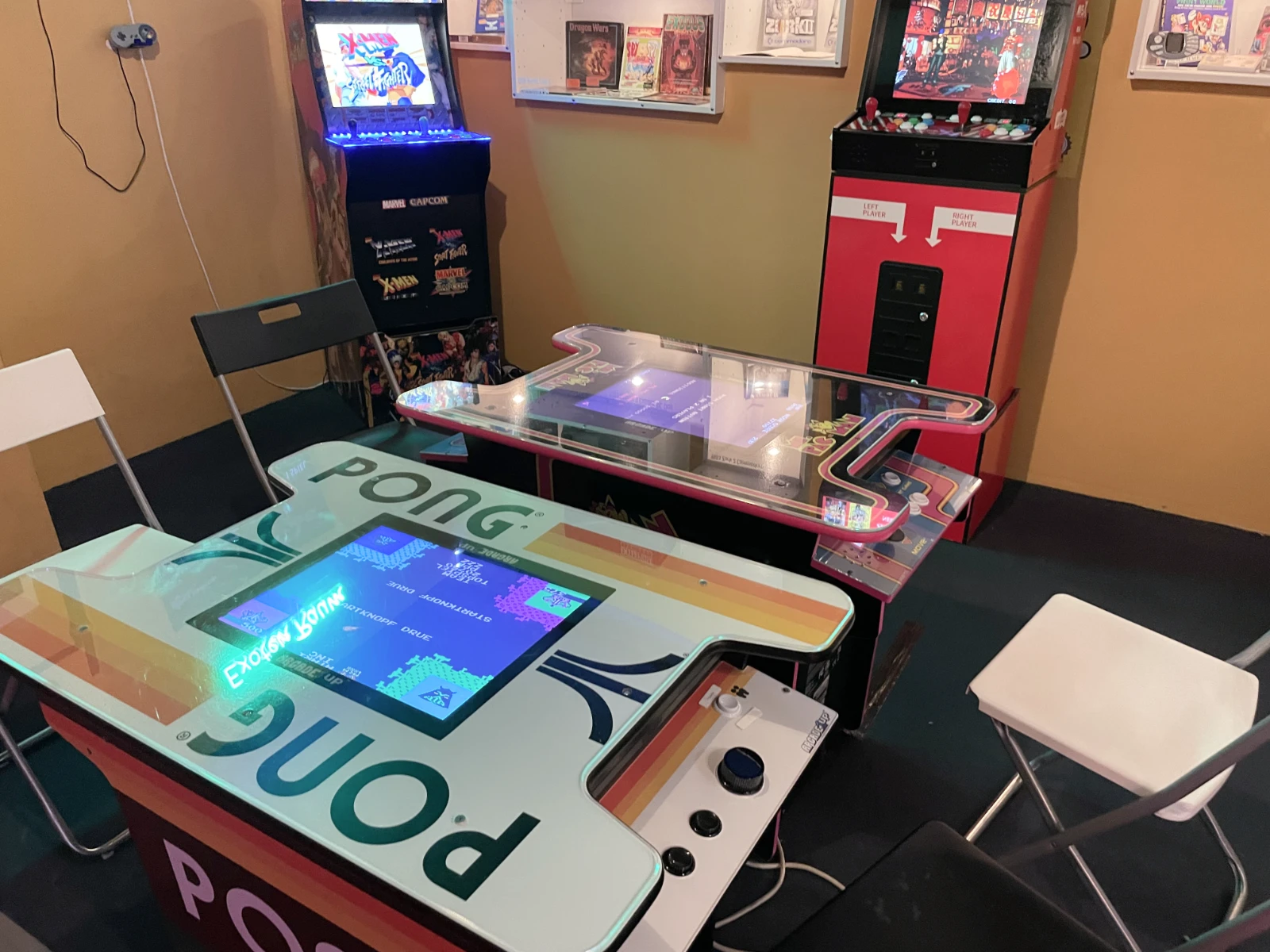
Rows of arcade machines invite you to sit
down and play.
I spent time at familiar home computers and consoles, poked at controllers I had not held in years and got pleasantly lost in a few classics. It was a strange but satisfying blend of memory lane and discovery tour: revisiting old favourites while stumbling across hardware that had somehow never crossed my path before.
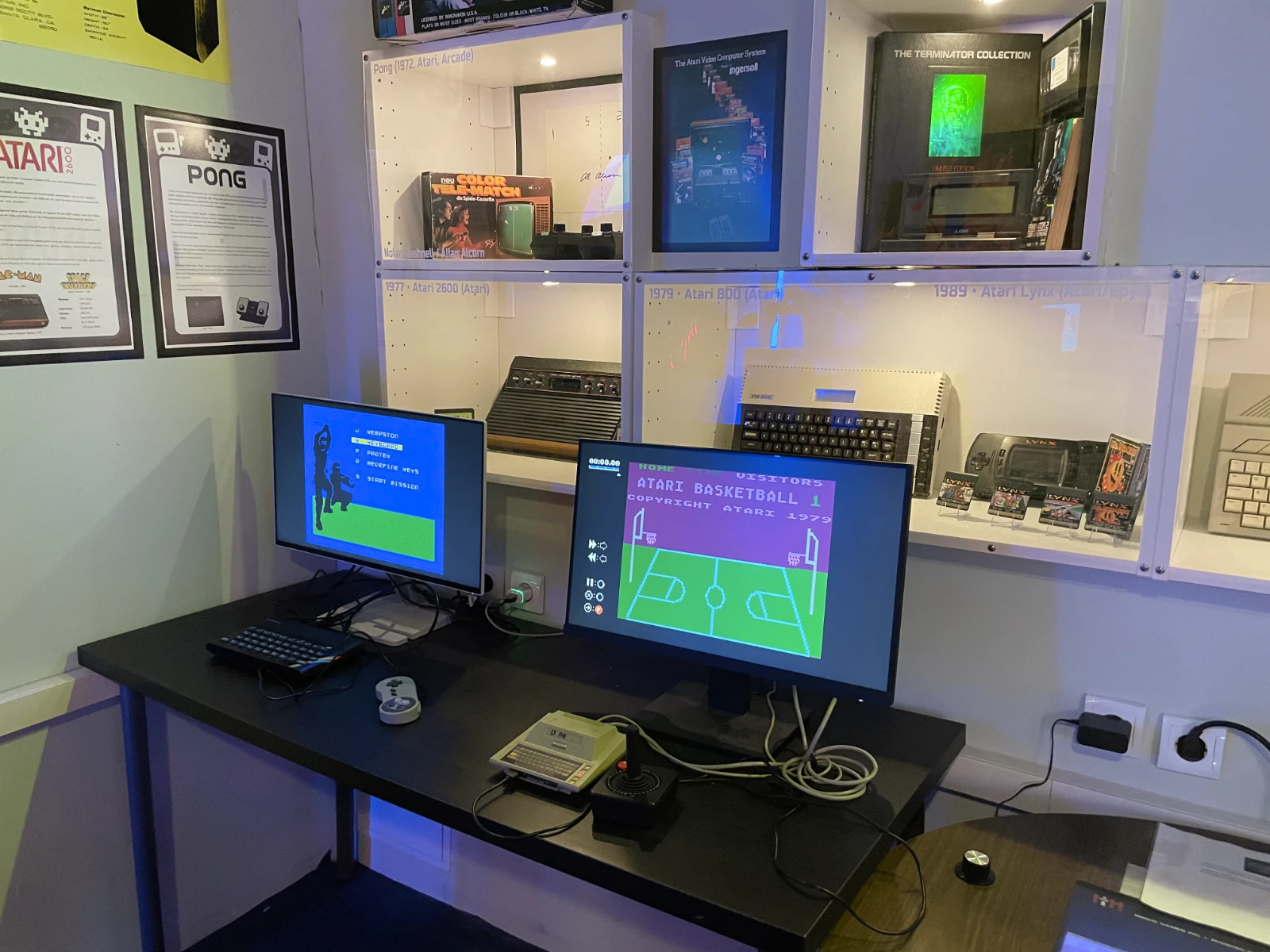
Modern mini versions of classic consoles also get their
place.
One thing worth noting is that many of the classic systems on display are actually modern recreations rather than original hardware. The museum features devices like the A500 Mini, the C64 Maxi, the A400 Mini, and TheC64 Maxi by Retro Games Ltd. These look authentic enough to satisfy nostalgia while being far more practical for the museum's needs. They are maintenance-free, connect easily to modern monitors and TVs, and don't require wrestling with dodgy disk drives or waiting for games to load from cassette tapes. The games play exactly as they did back in the day, but without the headaches that come with keeping decades-old hardware running. It is a smart compromise that keeps the museum accessible and functional.
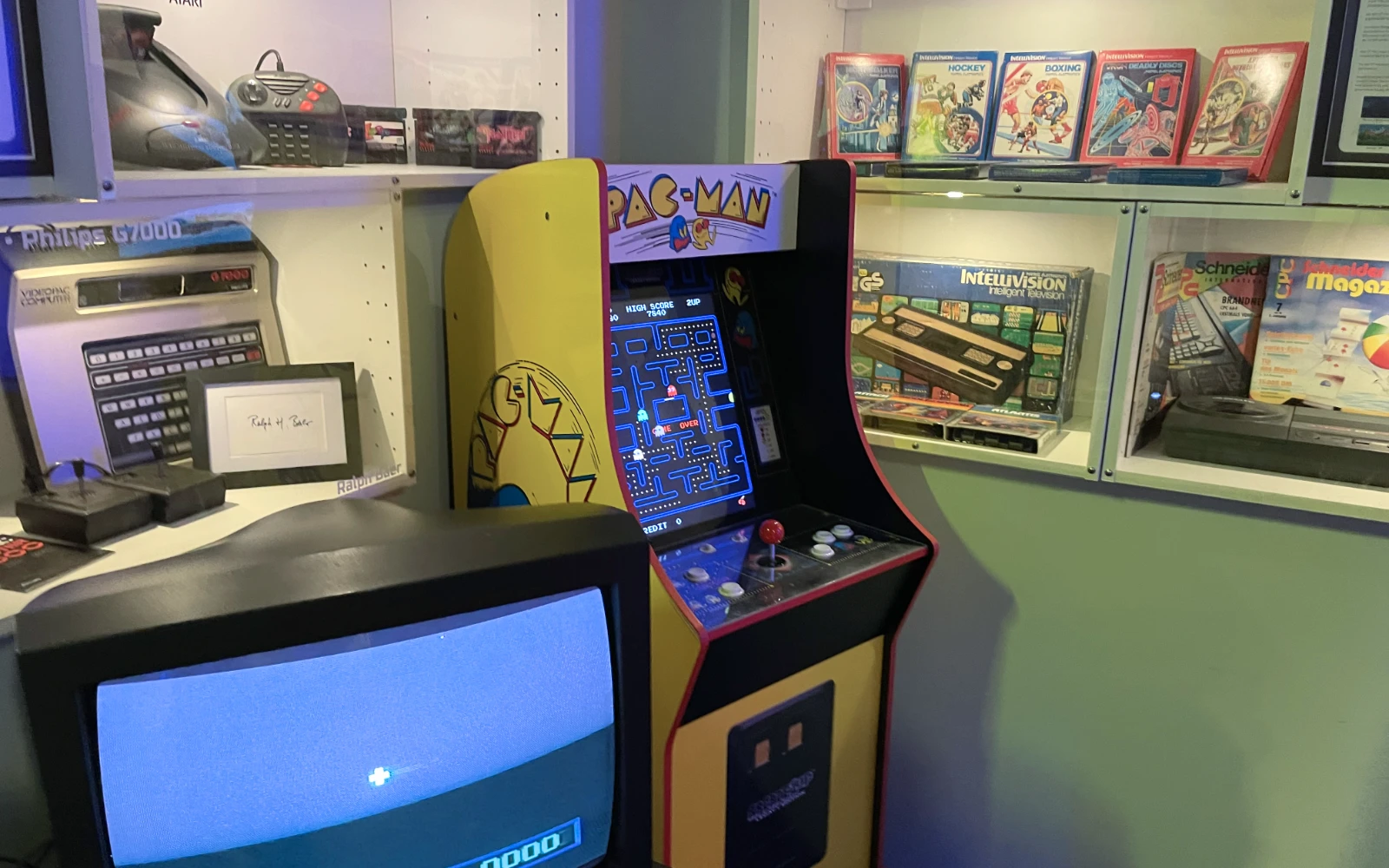
Pac-Man, the iconic yellow dot-muncher, ready for action.

Visitors exploring the various gaming
stations.
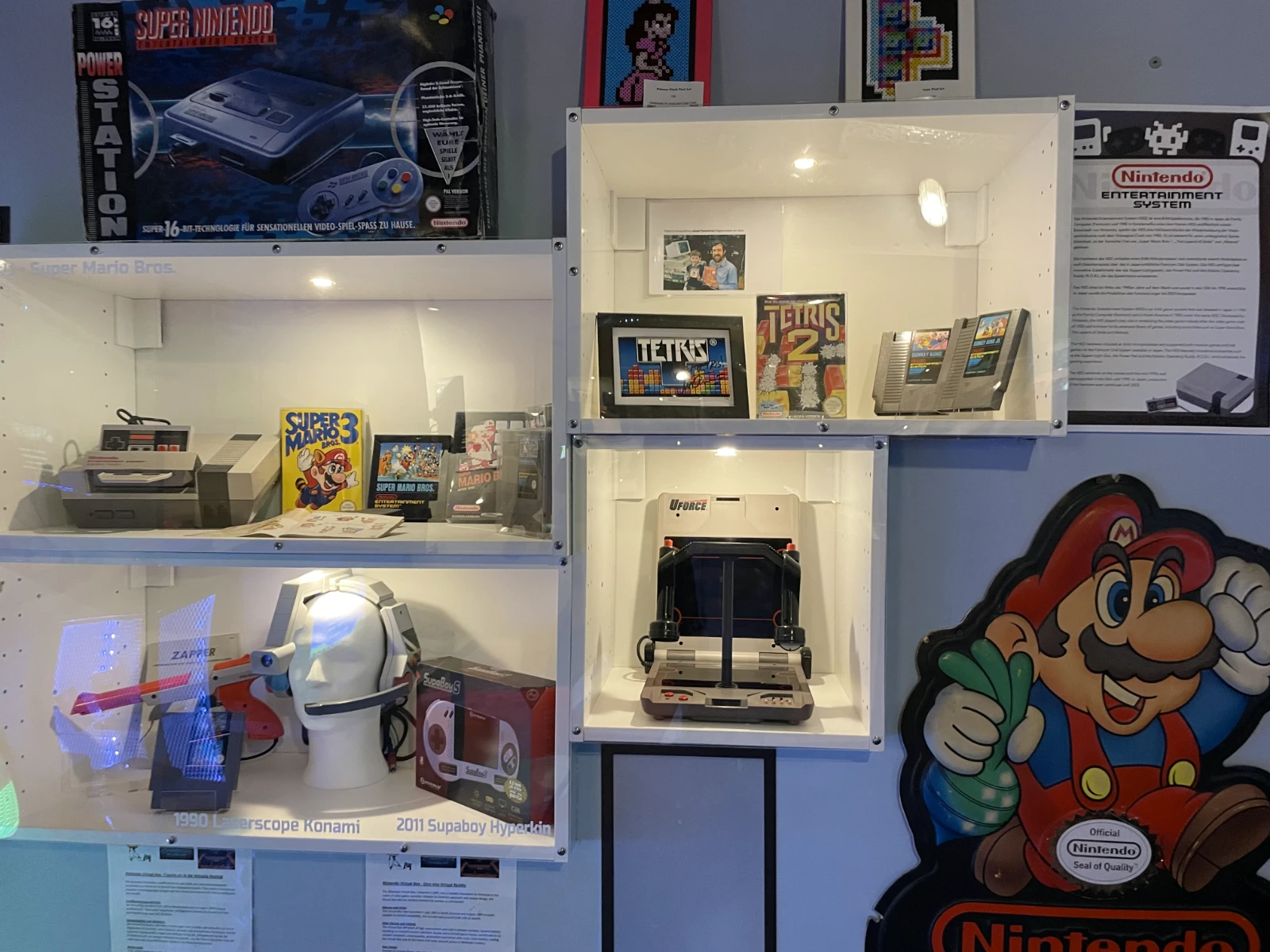
The Nintendo corner with the NES, the Zapper gun and
the iconic
games Super Mario Bros. 2 and Tetris.
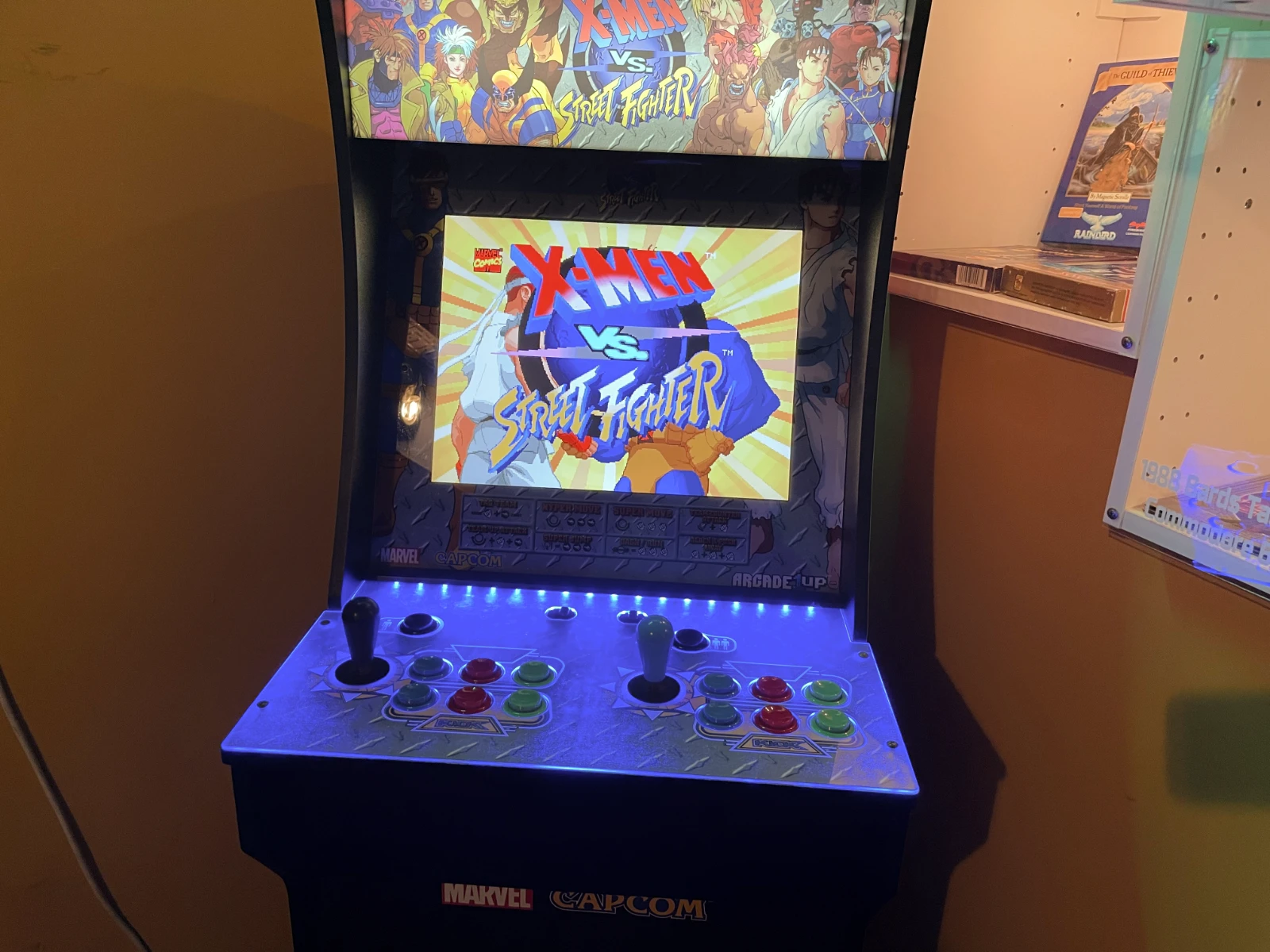
The Fighting game classic arcade cabinet X-Men
vs. Street
Fighter.
The ninety minutes went by quickly. I could easily imagine spending two or three hours there with a full-day ticket, especially if you are traveling with friends or want to really play individual systems. But as a compact, focused experience, the speedrun ticket worked beautifully. It turned the visit into a concentrated shot of retro gaming rather than an endless scroll.
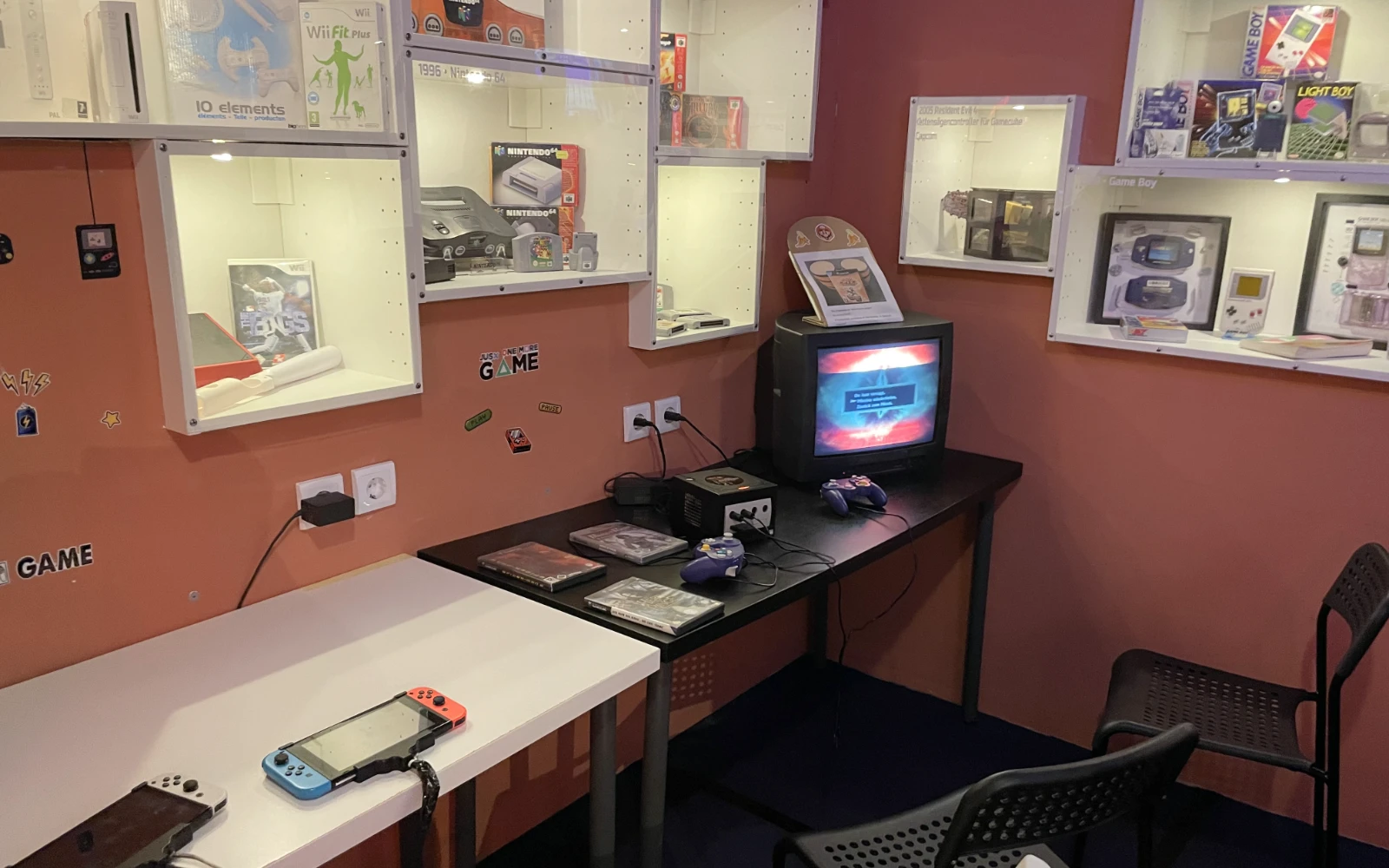
The GameCube represents Nintendo's unique
console design
philosophy.

Game Boy and Pokemon revolutionized
gaming.
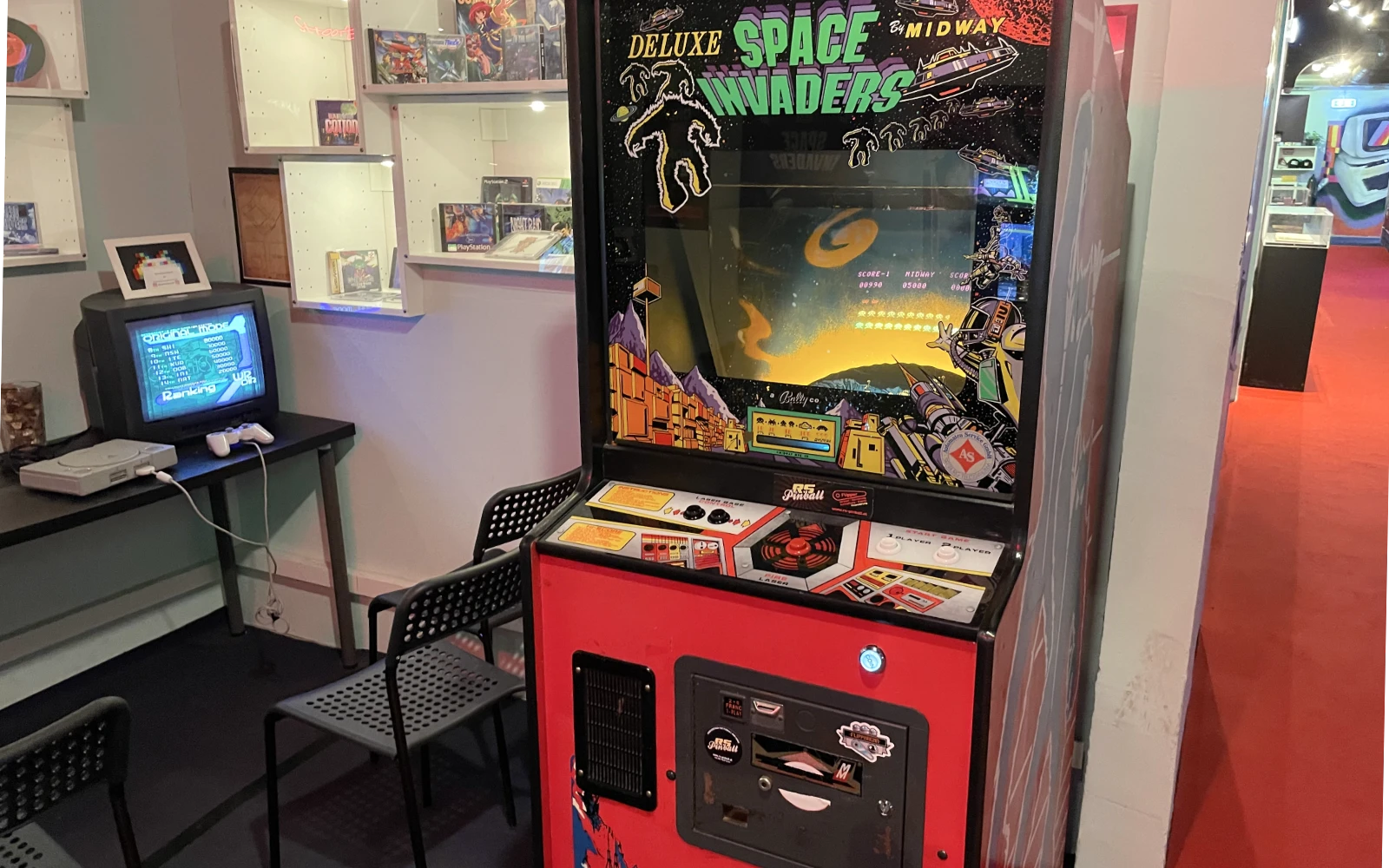
Space Invaders, one of the games that started it
all.
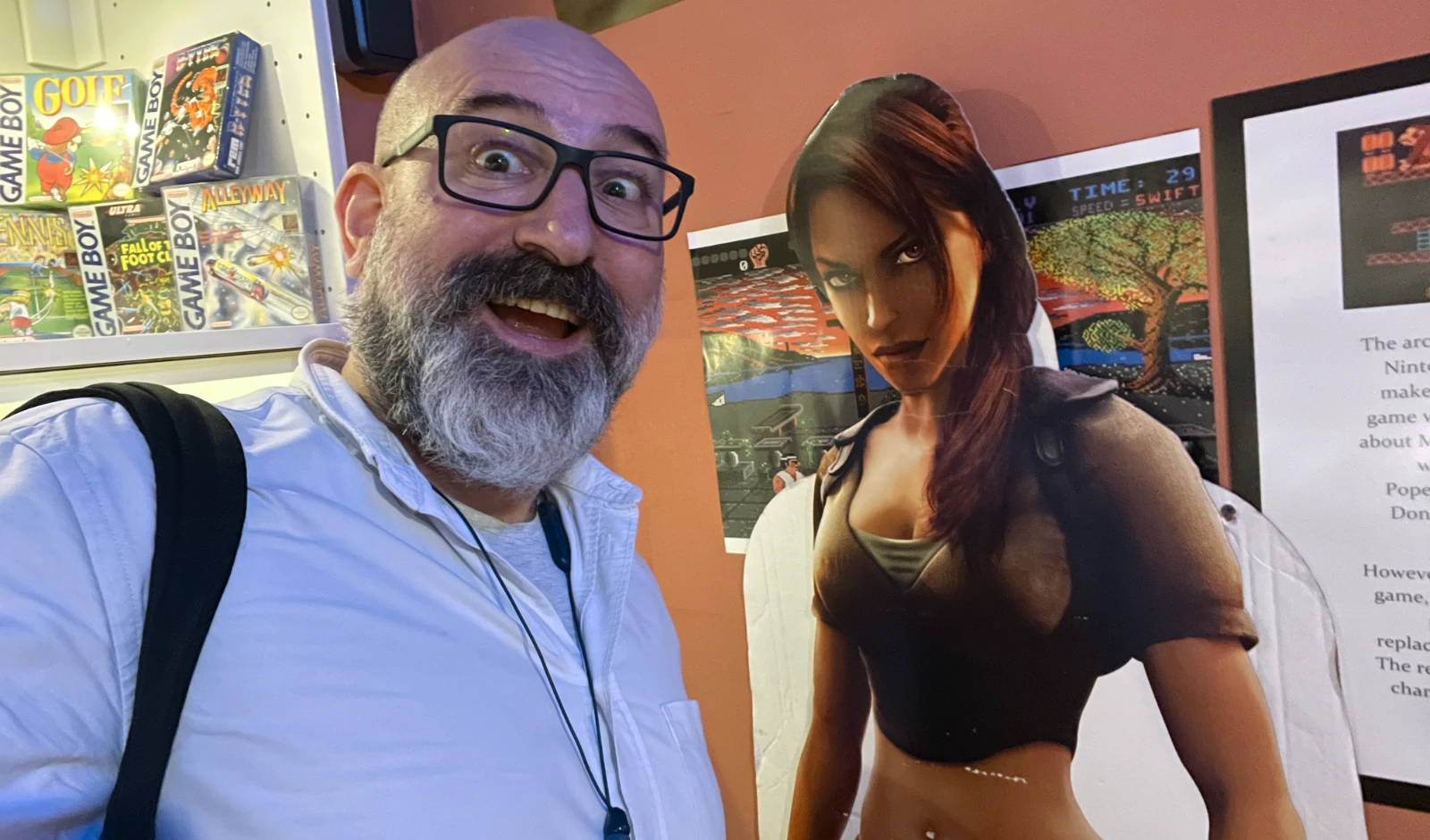
It was a great honor to meet Lara Croft who didn't
look too happy to see me.
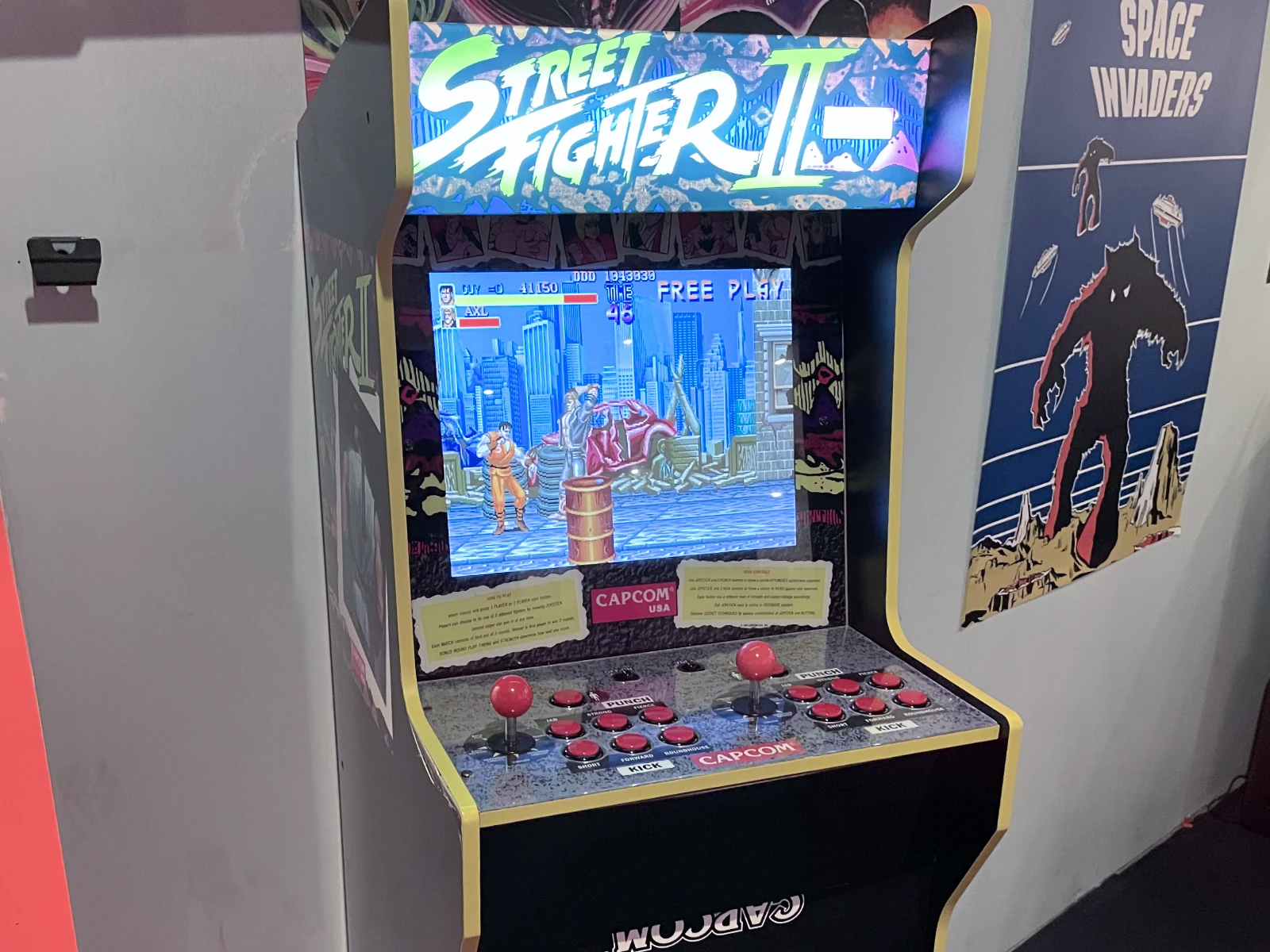
Street Fighter II, the fighting game that defined a
genre.
Why It Is Worth Visiting
What makes the Retro Gaming Museum Vienna stand out is the combination of history, interactivity and setting. You are not just reading about old hardware; you are using it. The exhibits trace more than fifty years of gaming, from simple early titles to the more sophisticated games that defined the 1990s and 2000s. Playing these games inside an actual WWII air-raid shelter adds a layer of context and atmosphere you do not get from a regular museum building.
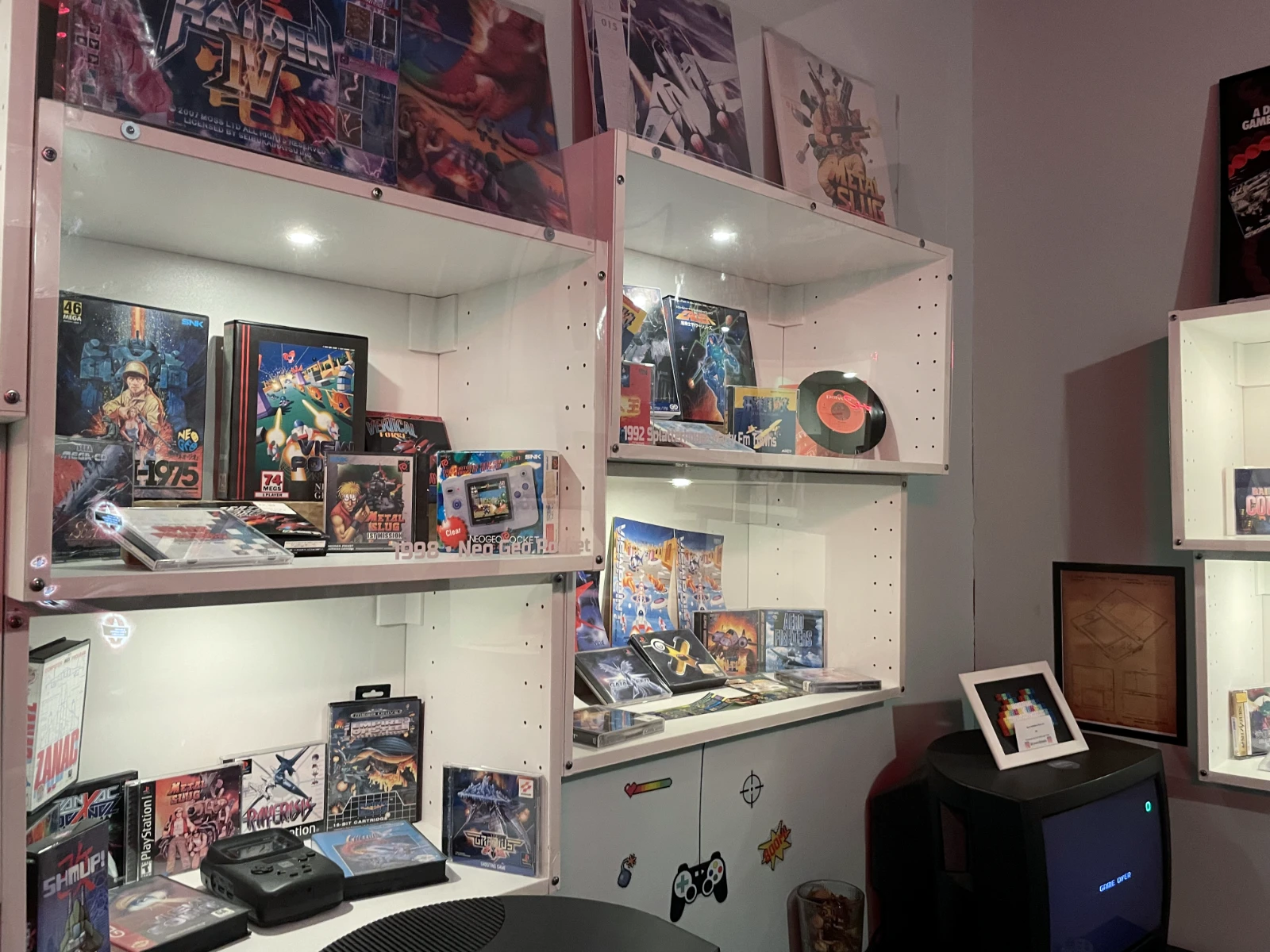
The Neo Geo brought arcade-quality gaming home.
It is also a place that works for different kinds of visitors. If you grew up with these systems, it is a blast of nostalgia. If you are more of a casual gamer, it is a playful crash course in how far games have come. And if you are into retro computing, demoscene aesthetics or the evolution of digital culture in general, you will find a lot to appreciate in seeing so much hardware in one place, still alive and interactive.

The bunker corridors connect different eras of gaming
history.

Portable gaming evolution from the early Game and
Watch
(bottom) to the more modern devices (top).
For me, the combination of the speedrun ticket, the bunker location and the chance to actually play on the machines made the visit feel like a small but memorable quest in the middle of Vienna. If you are in the city and have a spare evening, I can highly recommend descending those bunker steps and letting yourself be pulled into the glow of old screens for an hour and a half.
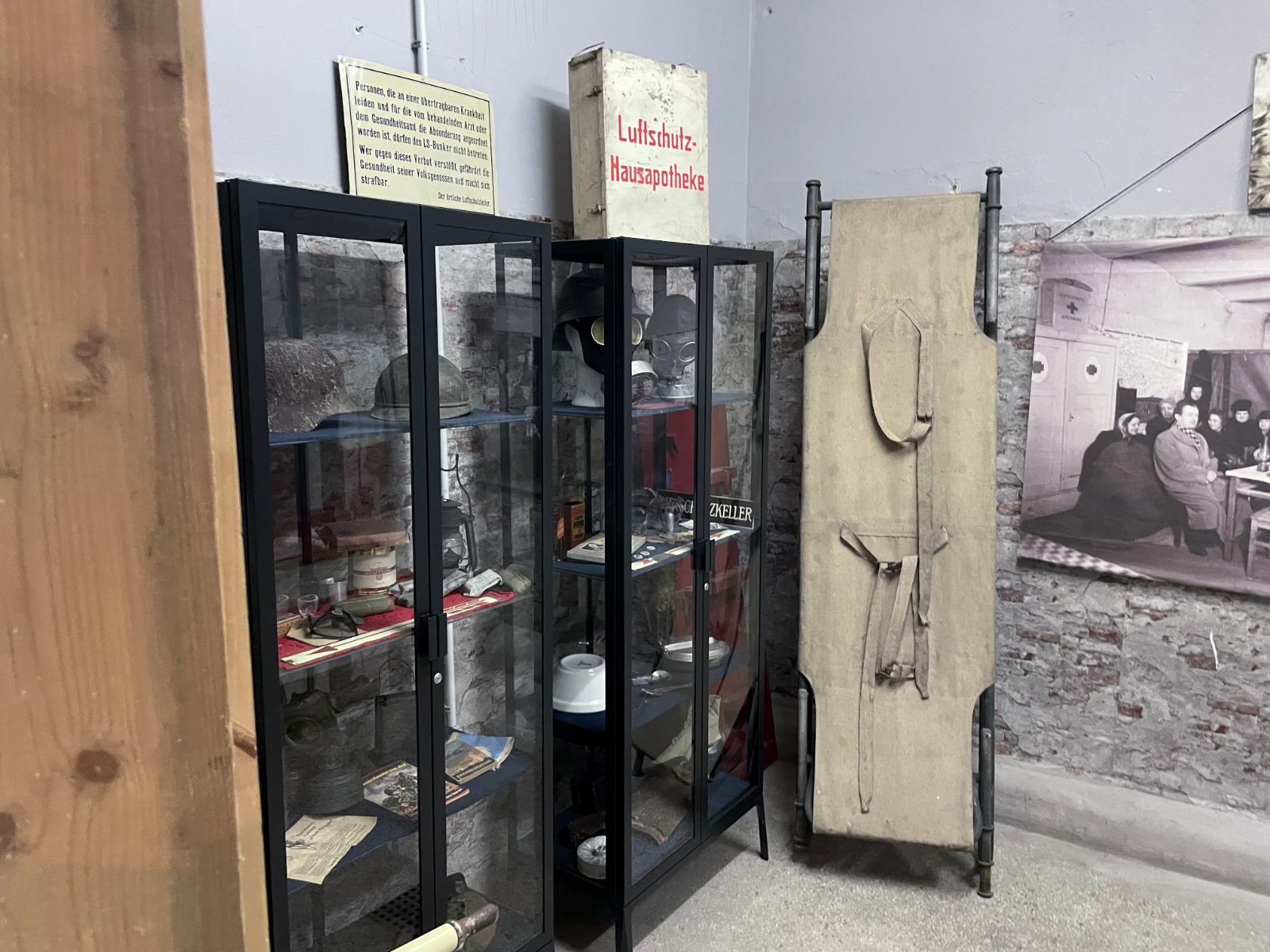
The original WWII bunker room preserved with period equipment.

The view of the bunker with its original sleep setup.
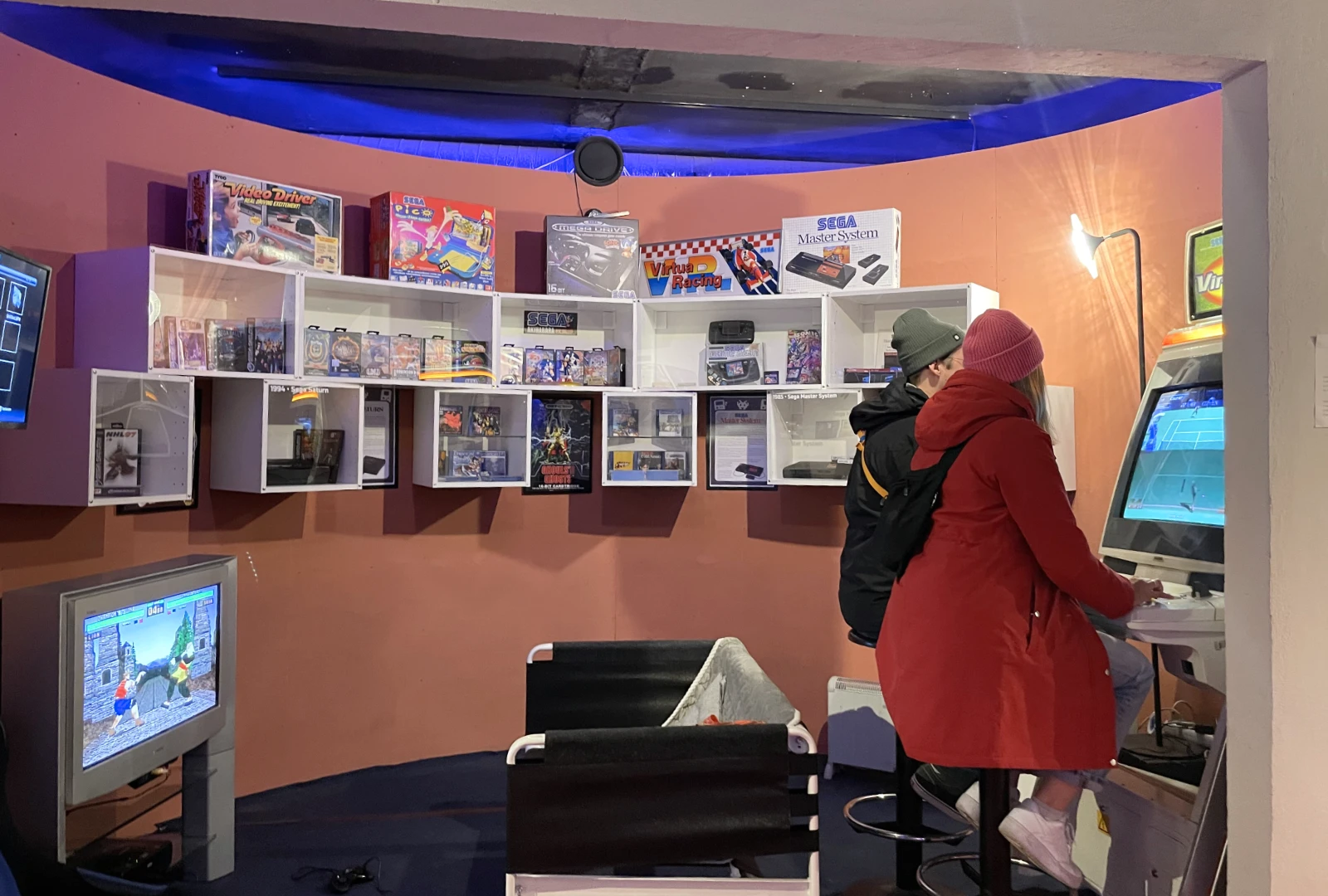
The best part: so many devices are playable,
not just on display.
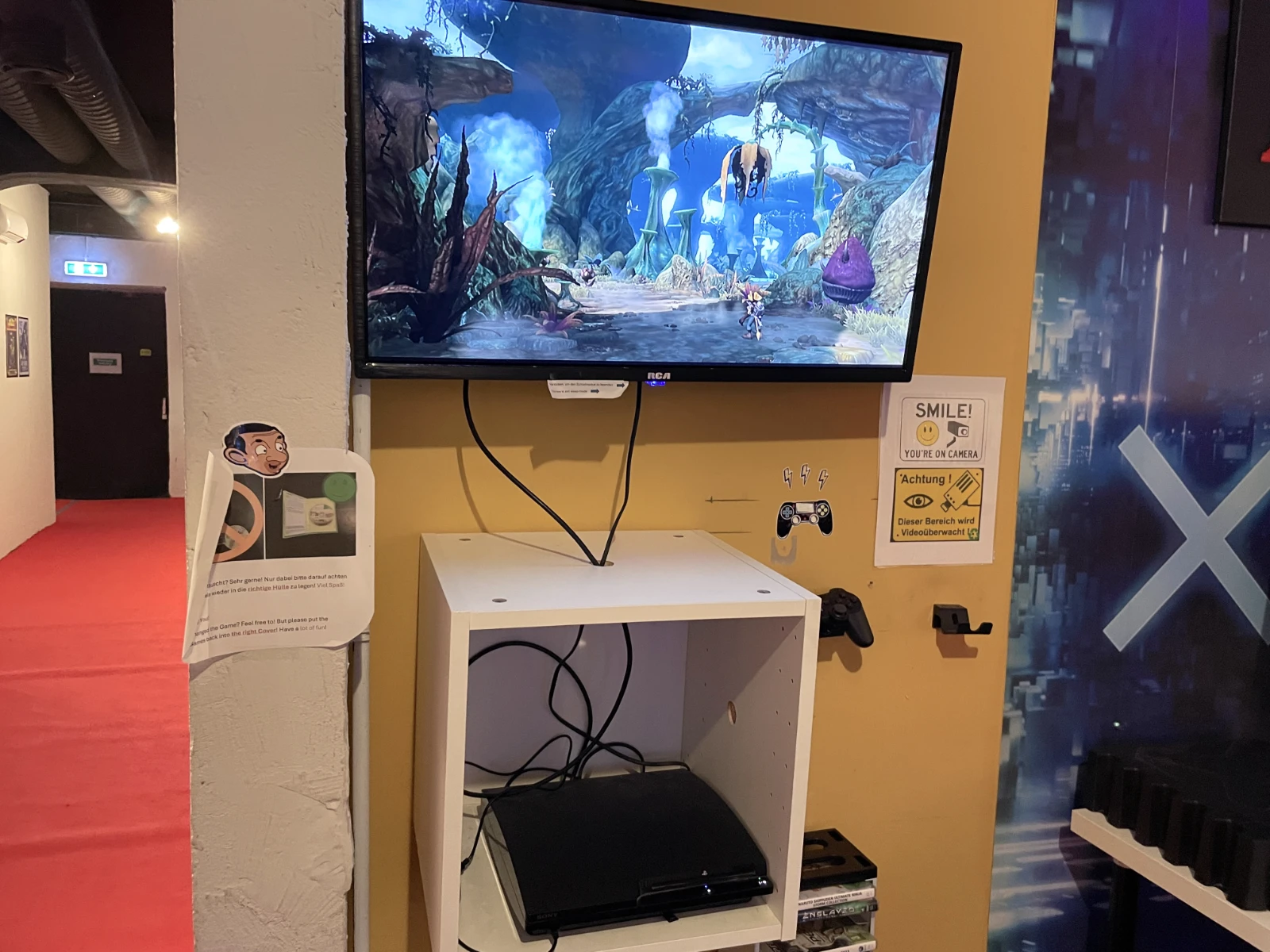
Even more recent systems like the PlayStation 3 are
featured.
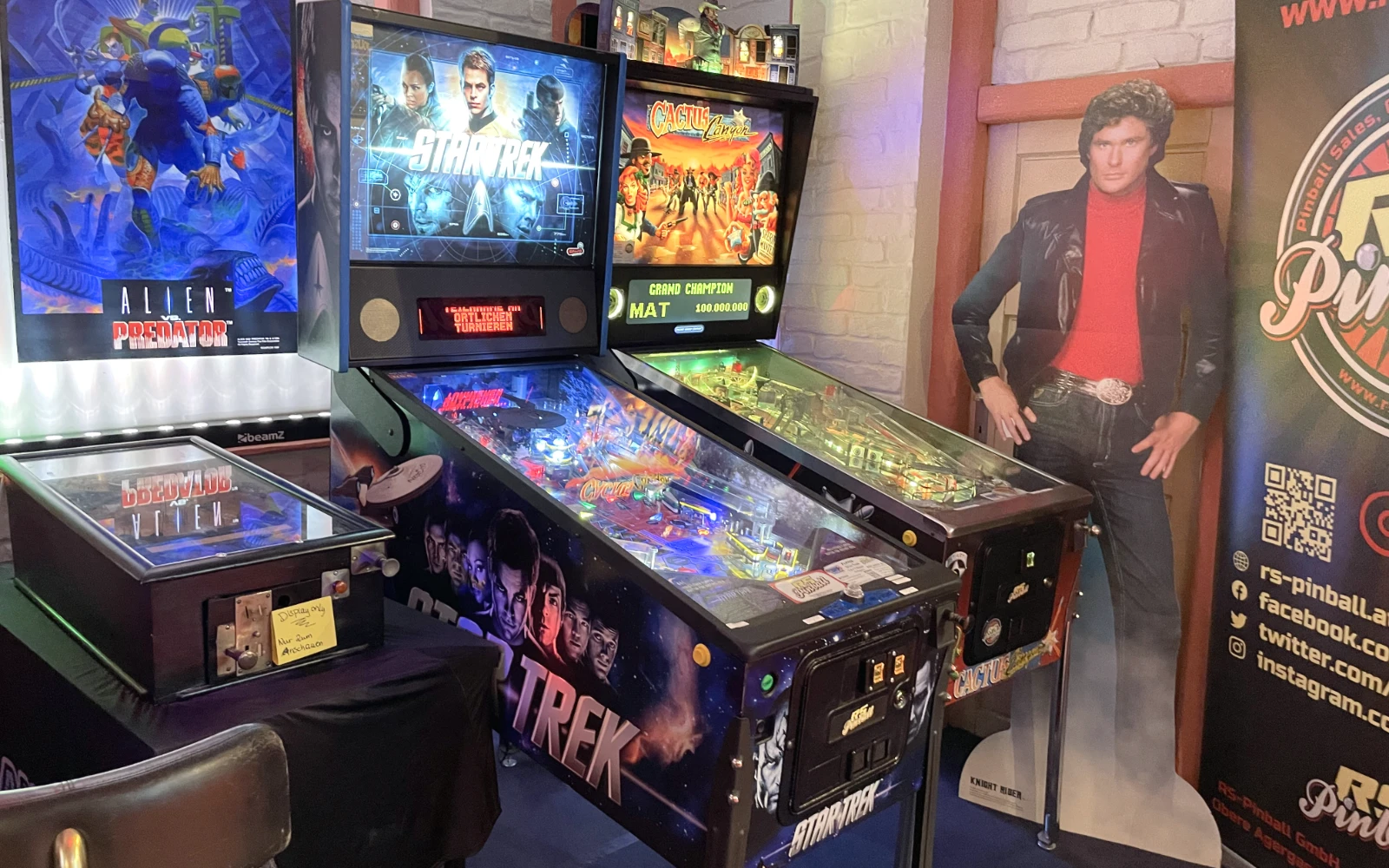
A pinball machines for some quirky fun with
Michael Knight
standing guard.

A beautiful lineup of classic arcade
cabinets.

Daytona USA for those who love racing games.
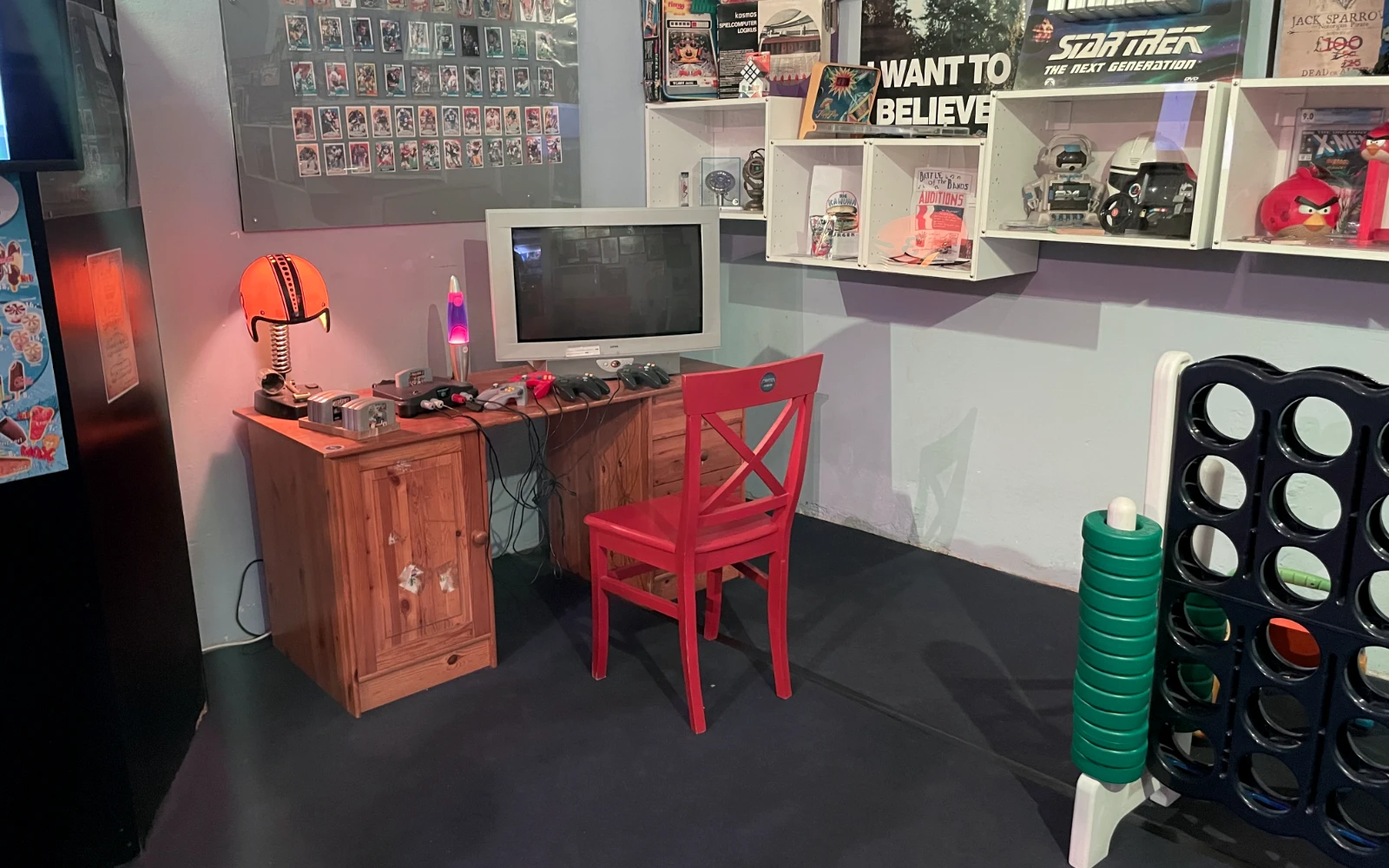 A retro living room setup with Nintendo 64, a CRT
TV, and a giant version of Connect Four
A retro living room setup with Nintendo 64, a CRT
TV, and a giant version of Connect Four
A Personal Note on Nostalgia
As much as I enjoyed wandering through these decades of gaming history, I left with a small sense of nostalgia overload. It's fun to revisit the machines and moments that shaped me, especially the things I never noticed or experienced back then... but nostalgia can feel a bit like a sugar rush: sweet, fleeting, and not the most nourishing use of mental energy.
I love looking back, but ultimately I'd rather channel that feeling into creating, discovering, and moving toward what's next.